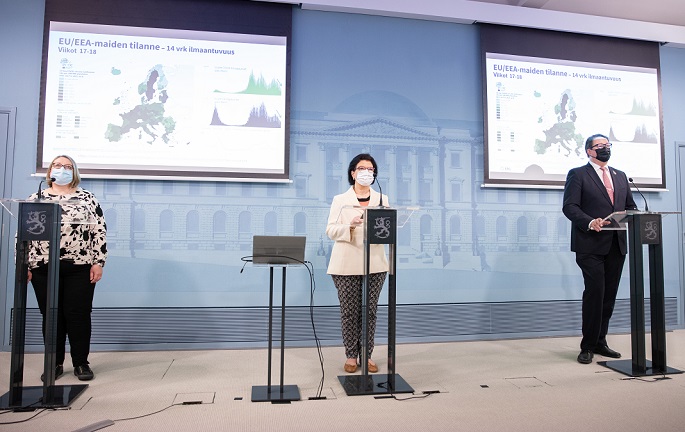Spread of coronavirus decelerates
Published : 21 May 2021, 03:13
Updated : 21 May 2021, 10:31
The COVID-19 situation deteriorated very quickly in some areas, also at local level in Finland on 10 to 16 May, said the Ministry of Social Affairs and Health and the Finnish Institute for Health and Welfare in a joint press release on Thursday.
Despite this, the number of new cases was about 70 per cent lower than that on eight to 14 March when the number of cases was at its highest.
The rate of decline in the number of cases has stabilised over the past four weeks, and the favourable development of the epidemic stalled between 3 and 9 May.
For this reason, it is justified that regions should maintain comprehensive and effective ways to prevent infections while the vaccine rollout is progressing swiftly. This helps to create better conditions for opening up society in the coming summer.
The vaccine rollout has progressed well across the country. In Finland, as many as 90 per cent of people aged 70 or above and 46 per cent of all those aged over 16 have already received their first vaccination dose. It is estimated that all those aged 16 or more who wish to be vaccinated will have received their first dose by the end of July.
Between 10 April and 16 May, about 1,400 new cases were reported to the communicable diseases register, showing a decrease of less than 100 cases from that in the previous week. The incidence of new cases was 25 per 100,000 inhabitants on 10 to 16 May, while in the previous week it was 27. About 40 per cent of all new cases were reported among people already in quarantine.
The total number of new cases reported in the last two-week period was almost 2,900, which is about 100 cases fewer than that in the preceding two-week period. The incidence of new cases was 52 per 100,000 inhabitants, while in the preceding two-week period it was 54.
On 10 to 16 May, the number of people tested for COVID-19, about 111,000, was lower than that in the previous week. The percentage of positive samples of those tested was about the same as in the week before, approximately 1.3 per cent. This percentage has remained low, meaning that infections are still being detected effectively.


